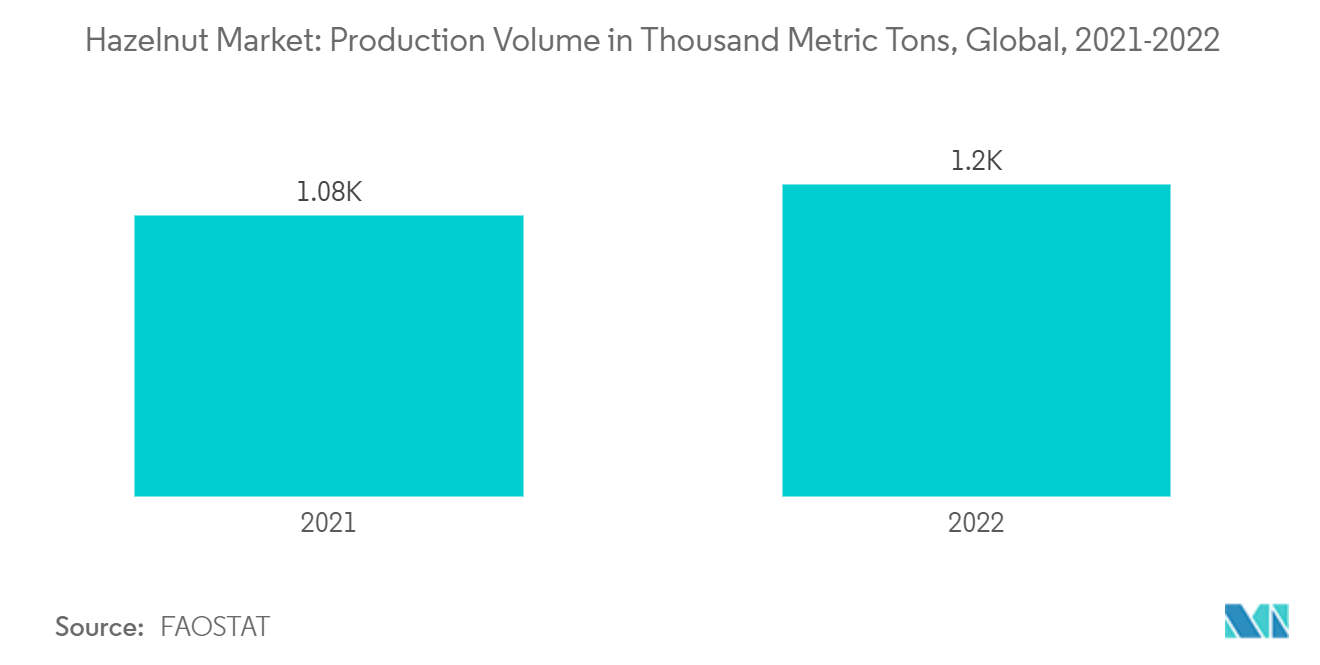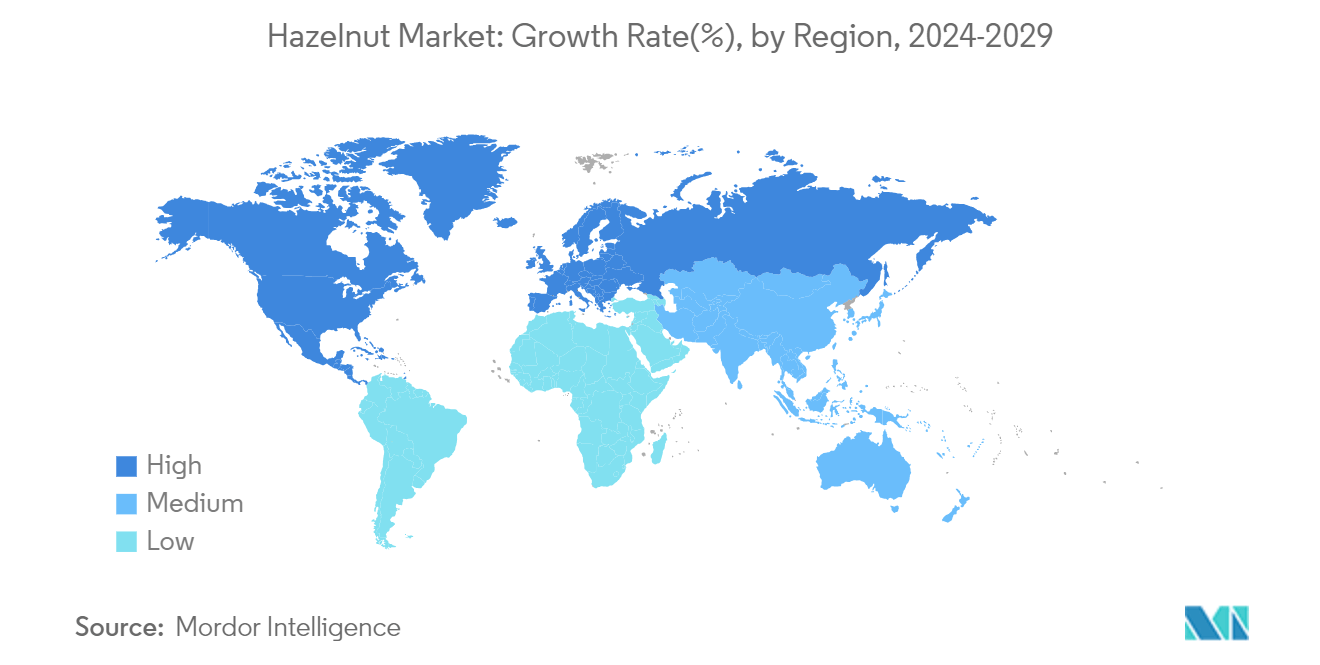Market Trends of Hazelnut Industry
High Demand from the Chocolate Industry is Expected to Drive the Production
- Hazelnut is the most preferred nut in the chocolate industry. They are used as a side ingredient in chocolate, biscuits, and other confections, accounting for 90% of hazelnut consumption. The increased usage of hazelnuts in chocolates is driving the production of hazelnuts globally. For instance, according to the FAOSTAT, global production of hazelnuts was 1,077.3 thousand metric tons in 2021, which increased to 1,195.7 thousand metric tons in 2022. Chocolate manufacturers are re-introducing their signature products with hazelnut-incorporated product lines, becoming an innovation in taste in the global confectionery market. For instance, in Switzerland, the sales volume of Chocolate confectionery has increased from 31.1 thousand metric tons in 2020 to 34.5 thousand metric tons in 2021, as per the Association of Swiss Chocolate Manufacturers. Further, chocolate hazelnut spreads are gaining popularity, similar to peanut butter.
- Further, many food companies have started making their own versions of this spread, which are available in major grocery chains. For instance, in 2020, the popular hazelnut spread Nutella was a common post-school snack for children, especially in Europe. This spread can be applied over slices of bread. The escalating popularity of Nutella has led to an increased demand for hazelnuts from industries catering to the increasing global consumer demand. Similarly, M&M launched its hazelnut spread chocolate candies featuring a hazelnut spread center covered in delicious milk chocolate.
- Hazelnut adds a fresh flavor to traditional chocolate products and is used to produce ice cream toppings. In Indonesia, the chocolate-hazelnut combination became famous when used in dishes like martabak and toast. These factors boost the sales of chocolates containing hazelnuts in major chocolate-producing countries.
- Hazelnut is a versatile ingredient used in sweet and salty meals, which appeals to millennial consumers who enjoy experimenting with various chocolate flavors. Hazelnuts are a key ingredient at Ferrero and are used in many of its trademark products, including Nutella, Ferrero Rocher, and Kinder Bueno. 25% of the world's supply of hazelnuts goes into making Ferrero products. Chocolatiers are also re-launching their products during festive seasons, with a fusion of traditional and Western styles, generally with luxury nuts incorporated into chocolates, boosting the demand for hazelnuts.

Europe is the Largest Hazelnut-consuming Region
- Nuts play an important role in German cuisine, particularly baked products and confectionery. Hazelnuts and almonds are the most commonly utilized nuts, mainly hazelnuts, as they are less expensive than almonds and other nuts. Most hazelnuts are imported from Turkey to Europe. Hazelnuts have long been a popular food source in Europe.
- According to the International Nut & Dried Fruit Council, Italy holds second place in the world's production and consumption of hazelnuts after Turkey, accounting for 75% of the global production. In Italy, hazelnuts are sold both in-shell and shelled, with in-shell nuts sold as snacks, while shelled nuts are sold mainly to confectioneries and bakeries. An estimated 90% of the hazelnuts produced in the country go to processing companies, while the remaining 10% is for fresh consumption.
- Moreover, 89.7% of the domestic demand within the country is fulfilled through production. The country depends on imports for the rest of the demand. According to the ITC trade map, in 2021, the country imported 12,076 metric tons of hazelnuts valued at USD 36,340 thousand.
- Piemonte is also one of the significant hazelnut-producing areas, accounting for 15% of the total Italian production. Italy typically grows the Corylus avellana variety, which detaches naturally from the husk and falls to the ground, unlike the Turkish type. It is then dried (sun or hot air) and shelled if needed. Tonda di Giffoni in Latium, Tonda Rossa in Campania, Tonda Gentile delle Langhe in Piemonte, and Santa Maria de Jesu in Sicily are some of the significant native cultivars in Italy.


